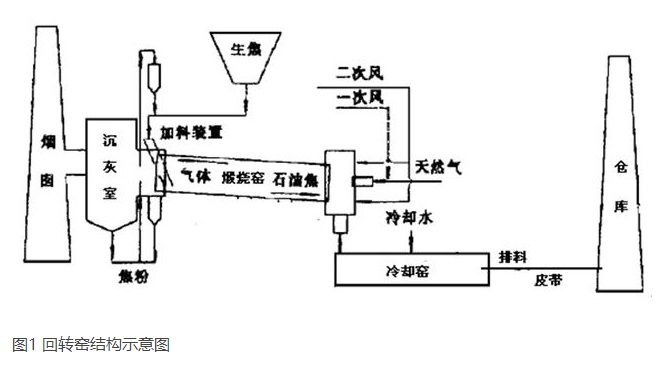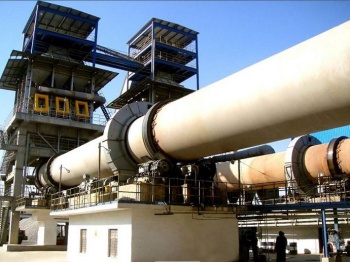【Technology】Factors and Countermeasures for Carbon Burn Loss in Rotary Kiln Calcination

【Technology】Factors and Countermeasures for Carbon Burn Loss
in Rotary Kiln Calcination of Petroleum Coke
Factors affecting carbon burn loss in rotary kiln calcination of petroleum coke:
1. Particle Size of Petroleum Coke: The smaller the particle size of petroleum coke, the larger the surface area, and the more chances it has to come into contact with air. Small-sized petroleum coke heats up quickly in the rotary kiln, causing an increase in the volatiles escaping from the kiln tail. During the calcination of raw petroleum coke, an excessive amount of fine coke may form a layer between the coke bed and the lining, hindering the proper movement of the coke bed and leading to the risk of slippage, making temperature control during calcination difficult. To minimize burn loss, it is advisable to maintain a larger particle size during pre-crushing to prevent over-pulverization.
2. Amount of Petroleum Coke Charged: Different specifications of rotary kilns correspond to different optimal charging amounts or ranges. If the charging amount is too small, regardless of adjustments, burn loss will increase. Moreover, a small input will disrupt process parameters and result in suboptimal calcination effects, causing certain carbon burn loss.
3. Length-to-Diameter Ratio and Slope of Rotary Kiln: The length-to-diameter ratio of a carbon rotary kiln should be greater than that of alumina clinker kilns or rotary kilns used for other purposes. This is because the petroleum coke processed by carbon rotary kilns contains more than 12% volatiles. Its calorific value can reach 5700 KJ/kg (high). By controlling parameters such as negative pressure and injection amount on the kiln body, the combustion of volatiles can be effectively utilized, increasing the temperature and extending the length of the high-temperature zone. If the inner diameter of the rotary kiln is too large, it will dilute the concentration of volatiles and reduce the length of the high-temperature zone. Additionally, with an increased inner diameter, the dispersion of fine coke lifted by the uneven lining surface and gaps also increases, and the chances of contact with air also rise. Therefore, a carbon rotary kiln should have a slender and long body.

Countermeasures for carbon burn loss in rotary kiln calcination of petroleum coke:
1. Since the charging amount has a significant impact on the thermal balance of a carbon rotary kiln, active implementation of automatic constant feeding control technology for rotary kilns should be carried out. Simultaneously, the accuracy of negative pressure and temperature sensors should be improved, temperature alarms should be set up, and automatic scanning and detection devices for the temperature of the kiln body in the high-temperature section should be installed. The level of process control automation should be enhanced.
2. Changes in the lining temperature of the rotary kiln can significantly affect the service life of the lining. Therefore, under permissible conditions, adhere to the core principle of "stable feeding, stable air pressure, stable kiln speed, and stable temperature" as the four stability operating principles. Specifically:
(1) Stable feeding refers to the use of a specific rotary kiln specification for the appropriate amount of petroleum coke.
(2) Stable air pressure means that the negative pressure difference between the kiln head and kiln tail should not fluctuate significantly. When adjusting the secondary and tertiary air volumes, consider whether the opening of the induced draft fan is appropriate. When adjusting the opening of the induced draft fan, also consider whether the air volume is reasonable.
(3) Stable kiln speed means maintaining a consistent rotation speed as much as possible, avoiding sudden increases or decreases.
(4) Stable temperature means keeping the temperature of the petroleum coke in the kiln between 1200-1250°C and within a small fluctuation range. Stable temperature is the result of the previous three stability principles and is also the goal pursued during the process. For more information on calcined petroleum coke smelting technology, feel free to contact us.
No related results found









0 Replies